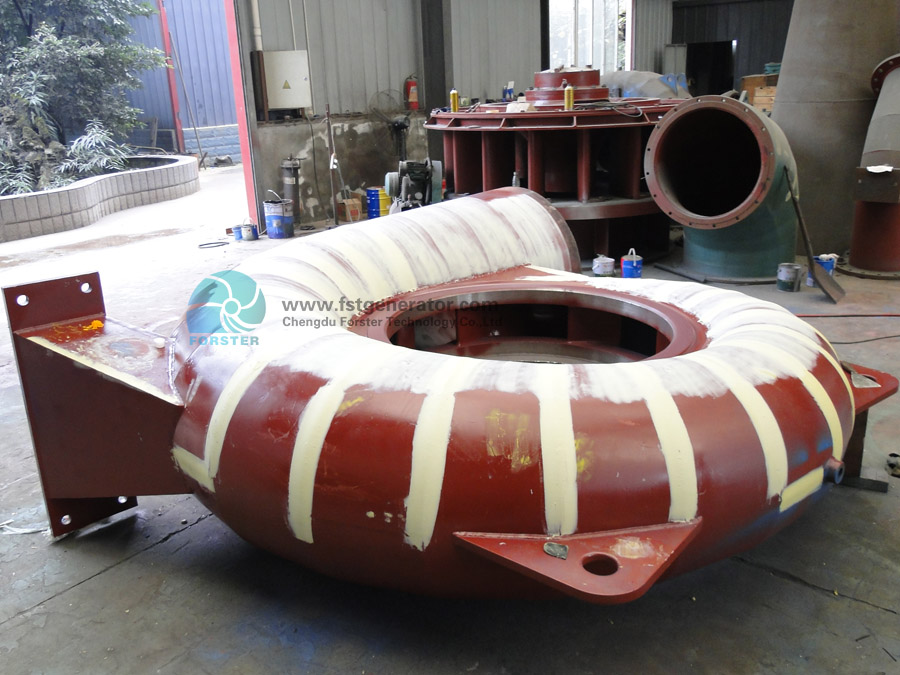A water turbine, with the Kaplan, Pelton, and Francis turbines being the most common ones, is a large rotary machine that works to convert kinetic and potential energy into hydroelectricity. These modern equivalents of the water wheel have been used for over 135 years for industrial power generation, and more recently hydropower energy generation.
What Are Water Turbines Used for Today?
Today, hydropower contributes to 16% of the world’s power generation. In the 19th century, water turbines were predominantly used for industrial power before electrical grids became widespread. Currently, they are used for electric power generation and can be found in dams or areas where heavy water flow occurs.
With global energy demand rising rapidly and factors such as climate change and depleting fossil fuels, hydroelectricity has the potential to make a large impact as a form of green energy on a worldwide scale. As the search for environmentally friendly and clean power sources continues, Francis turbines could prove to be a very popular and increasingly adopted solution in the coming years.
How Do Water Turbines Generate Electricity?
Water pressure created from naturally or artificially flowing water exists as the energy source for water turbines. This energy is captured and turned into hydroelectric power. A hydropower plant will generally use a dam on an active river to store water. The water is then released in increments, flowing through the turbine, rotating it, and activating a generator that then produces electricity.
How Big Are Water Turbines?
Based on the head under which they operate, water turbines can be classified into high, medium, and low head. Low-head hydropower systems are larger, as the water turbine has to be large to achieve a high flow rate while low water pressure is applied across the blades. In turn, high-head hydropower systems don’t need such a large surface circumference, as they are used to harness energy from faster-moving water sources.
Chart explaining the size of the different hydropower system parts including the water turbine
A chart explaining the size of the different hydropower system parts including the water turbine
Below, we will explain a few examples of different types of water turbines used for different applications and water pressure.
Kaplan Turbine (0-60m Pressure Head)
These turbines are known as axial flow reaction turbines, as they change the pressure of the water as it flows through it. The Kaplan turbine resembles a propeller and features adjustable blades to maximize efficiency over a range of water and pressure levels.
A Kaplan turbine diagram
Pelton Turbine (300m-1600m Pressure head)
The Pelton turbine—or Pelton wheel—is known as an impulse turbine, as one that extracts energy from moving water. This turbine is suited for high head applications, as it requires a high amount of water pressure to apply force on the spoon-shaped buckets, and cause the disk to rotate and generate power.
Pelton turbine
Francis Turbine (60m-300m Pressure Head)
The final and most famous water turbine, the Francis turbine, accounts for 60% of the world’s hydropower. Working as an impact and reaction turbine that operates at a medium head, the Francis turbine combines axial and radial flow concepts. By doing this, the turbine fills the gap between high and low-head turbines, creating a more efficient design, and challenging engineers today to further improve upon it.
More specifically, a Francis turbine operates by water flowing through a spiral casing into (static) guide vanes which control the flow of the water towards the (moving) runner blades. Water forces the runner to rotate through the combined impact and reaction of forces, finally exiting the runner through a draft tube that discharges the water flow into the external environment.
How Do I Choose a Water Turbine Design?
Choosing the optimal turbine design often comes down to one thing; the amount of head and flow rate accessible to you. Once you’ve established what kind of water pressure you can harness, you can then decide if an enclosed “reaction turbine design” like the Francis turbine or an open “impulse turbine design”, like the Pelton turbine is a better fit.
Water turbine diagram
Finally, you can establish the necessary speed of rotation of your proposed electrical generator.
Post time: Jul-15-2022

